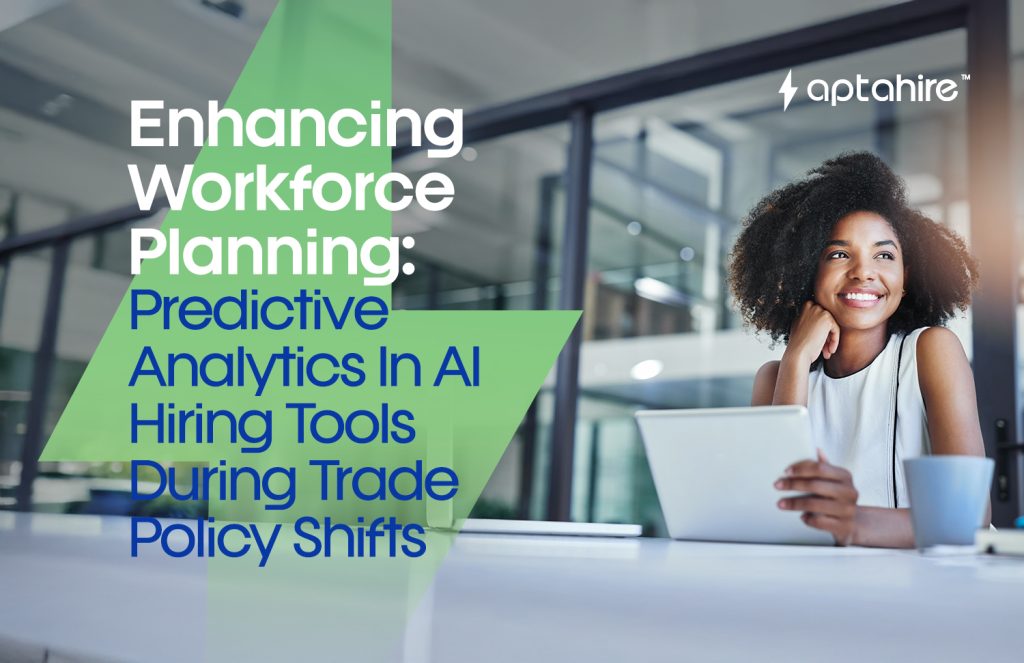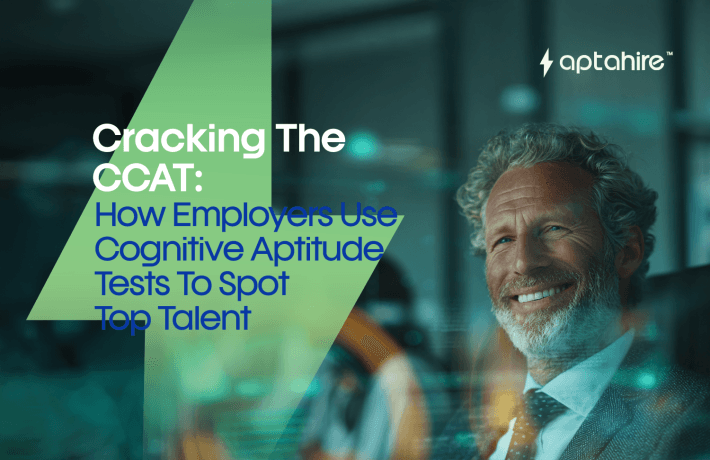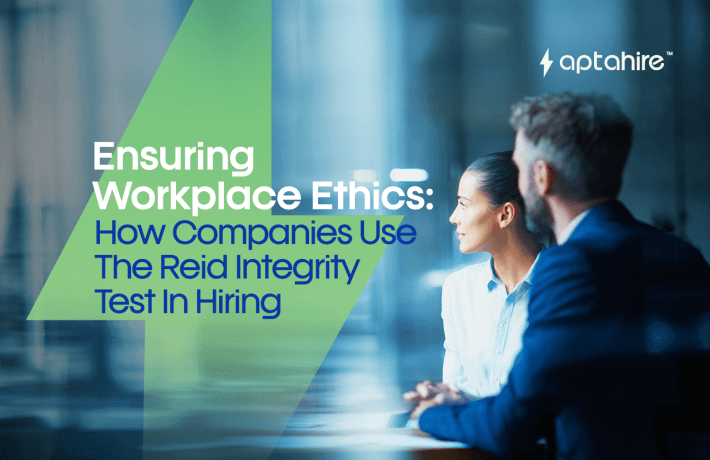Enhancing Workforce Planning: Predictive Analytics in AI Hiring Tools During Trade Policy Shifts

Introduction
Have you noticed how hiring has become unpredictable lately? If you’re an HR leader or talent acquisition strategist, you’re probably already feeling the pressure from rapid changes in global trade policies. Shifts in tariffs, import-export rules, and global supply chains don’t just impact goods, they impact jobs. When one country increases tariffs, manufacturers pivot operations, warehousing grows in new regions, and suddenly, HR teams have to pivot with zero warning. That’s where AI-driven predictive analytics comes into play.
As someone who’s worked closely with HR teams across logistics, manufacturing, and tech, I can confidently say that this level of market disruption isn’t going away. But here’s the good news: Predictive analytics backed by artificial intelligence is giving HR teams the power to stay a step ahead. In this blog, we’ll break down how predictive analytics works in AI hiring tools, why it’s so relevant right now, and how it’s becoming a vital asset for companies navigating volatile trade environments.
What Is Predictive Analytics in Hiring?
Let’s start with the basics. Predictive analytics uses historical data, real-time signals, and AI models to forecast future hiring needs. In other words, it helps you make better decisions by identifying patterns and predicting what’s coming.
In the hiring space, this means using AI to:
- Predict workforce demand based on industry or regional changes
- Spot potential skill shortages in advance
- Optimize the timing and location of recruitment drives
- Reduce hiring delays caused by market shifts
The real strength lies in combining data from your organization, industry reports, and even geopolitical or trade changes. That’s when predictive analytics becomes a powerful workforce planning tool.
Experience from the Field: The Trade Policy Domino Effect
We recently saw a surge in hiring challenges following a major tariff adjustment on overseas automotive components. Several manufacturers moved production facilities or sourced parts locally to minimize costs. But that operational shift created a new problem: local labor demand increased overnight. HR departments were left scrambling.
A Tier 1 supplier working with multiple auto brands used an AI hiring tool to navigate this exact scenario. Within days, the platform flagged an upcoming skill shortage in the CNC machining division based on production forecasts and shifting supply routes. This insight gave the HR team time to ramp up hiring before the crunch.
This isn’t just smart hiring, it’s smart business. It reduced production delays, improved internal alignment, and built long-term trust between HR and operations.
How Predictive Analytics Empowers Workforce Planning
Here’s where predictive AI really shows its value:
- Proactive Demand Forecasting AI tools use current hiring trends, internal workforce data, and external economic factors to forecast the kind of roles you’ll need in the next quarter, or even the next year. This reduces the surprise factor when trade changes hit.
- Localized Talent Mapping If a policy shift causes businesses to relocate their supply chains, AI platforms can help you instantly identify nearby talent pools with the right skillsets, saving time and money on sourcing.
- Automated Risk Assessment AI can analyze labor market conditions, skills availability, and cost fluctuations to suggest where hiring may get risky or expensive. This helps HR teams pivot faster and with evidence-backed plans.
- Skill Gap Analysis Predictive models assess your current workforce and compare it to future role requirements. This allows you to build training programs or hiring campaigns before the gaps become critical.
- Scenario Planning Tools Advanced AI platforms can simulate what would happen under various trade or economic changes. For instance, what if a new tariff adds 15% to a component’s cost? How would that affect production, and how many new workers would you need to manage the shift?
Expertise in Data-Driven Decision Making
At Aptahire, we’ve worked with companies facing sudden hiring surges due to policy and economic shifts. Our AI-driven tools don’t just show you what’s happening, they show you what to do next. With real-time dashboards, behavioral data analysis, and high-volume screening capabilities, our system transforms uncertainty into action.
Take this example: A logistics firm based in Chennai needed to ramp up warehouse staffing within 30 days after an e-commerce client shifted fulfillment operations. Using Aptahire, they forecasted peak hiring dates, launched localized candidate sourcing, and filled 120+ roles in 3 weeks, 70% faster than traditional recruitment methods.
These aren’t just metrics, they’re proof that predictive analytics delivers.
Industry Stats That Back It Up
Here’s what global HR data tells us:
- Organizations using predictive analytics are 2x more likely to improve their recruiting strategies year-over-year (IBM Talent Trends)
- 74% of HR leaders say workforce planning is their top priority during trade disruptions (Deloitte Global Workforce Study)
- Predictive analytics reduces time-to-hire by an average of 40% (LinkedIn Talent Solutions)
- 69% of businesses that adopted AI-based hiring tools during economic shifts saw a reduction in recruitment cost per hire (PwC)
These aren’t just buzzwords or temporary trends. Predictive analytics is already reshaping how hiring works, and its role is only growing.
Tips to Get Started with Predictive Hiring Tools
If your organization is just beginning to adopt AI for workforce planning, here’s where to focus:
- Start Small but Smart Focus on one department or region and test how predictive analytics improves hiring outcomes. Use those wins to scale.
- Collaborate Across Teams Predictive insights are most powerful when HR, operations, and finance are all aligned. Share your data and learn together.
- Look Beyond the Resume AI tools assess more than just qualifications. They look at soft skills, adaptability, and cultural alignment. Use that to your advantage when uncertainty is high.
- Audit Your Data Regularly Predictive models are only as good as the data you feed them. Ensure your hiring, performance, and turnover data are clean and up to date.
- Train Your Team Investing in upskilling your HR staff on how to interpret predictive analytics will ensure long-term success.
Final Thoughts: Building a Future-Ready HR Function
In 2025, global trade policies, regional labor shifts, and supply chain realignments are happening more frequently than ever. If HR teams want to stay resilient, they need tools that offer more than just automation. They need foresight.
Predictive analytics is not about replacing the HR professional. It’s about empowering them. When paired with AI, it allows you to act earlier, hire smarter, and guide your organization through uncertain times with confidence.
Trade disruptions might be outside our control, but how we respond to them isn’t. By integrating AI hiring tools with predictive analytics, HR can take the lead in workforce strategy and ensure that talent planning becomes a competitive advantage.
The companies that thrive won’t just react to change. They’ll anticipate it.
FAQs
- How is AI used in predictive analytics?
AI enhances predictive analytics by processing vast datasets to identify patterns, trends, and anomalies that humans might miss. Machine learning models are trained on historical data to predict future outcomes, such as customer behavior, market demand, or operational risks. AI goes beyond traditional statistical models by continuously learning from new data, improving prediction accuracy over time.
Techniques like regression, classification, clustering, and deep learning are core to how AI forecasts outcomes across sectors like HR, marketing, logistics, and finance.
- How does artificial intelligence technology affect international trade?
AI affects international trade by increasing efficiency, reducing fraud, and enabling real-time decision-making in supply chains. Automated documentation, smart customs clearance, demand forecasting, and AI-driven trade finance models help reduce barriers and delays.
Moreover, AI enables better risk management in cross-border transactions by analyzing geopolitical trends, exchange rate fluctuations, and regulatory compliance. It allows exporters and importers to optimize logistics, pricing, and inventory, making global trade faster and more resilient.
- What is the goal of predictive analytics in banking with Generative AI?
In banking, predictive analytics aims to improve decision-making in risk management, customer retention, and fraud detection. With generative AI, the goal is to simulate multiple economic and behavioral scenarios based on past data.
For example, it can generate synthetic transaction patterns to test fraud detection models or simulate how customers might respond to loan offers. This enables banks to tailor personalized solutions, optimize lending strategies, and comply with evolving regulations with much more agility.
- What are some of the activities for which brands can use predictive analytics?
Brands use predictive analytics for a range of strategic activities:
- Customer segmentation and targeting: Predicting who is most likely to convert or churn
- Inventory management: Forecasting demand to avoid overstock or understock
- Marketing optimization: Identifying which campaigns will generate the highest ROI
- Product development: Anticipating trends and consumer preferences
- Pricing strategies: Using real-time data to set optimal price points
- Customer support: Predicting service needs and automating responses
These predictions allow brands to proactively act rather than react, driving better business outcomes.
- What is the main goal of predictive analytics?
The main goal of predictive analytics is to make informed decisions about the future using data from the past and present. It identifies patterns and correlations to anticipate future events or behaviors with a measurable level of confidence.
Whether it’s forecasting sales, preventing churn, or managing risks, predictive analytics helps organizations allocate resources efficiently and act with strategic foresight.
- How is AI used in the stock market prediction?
AI is used in stock market prediction through algorithmic models that analyze historical price movements, financial news, social sentiment, and macroeconomic indicators. Deep learning models, including recurrent neural networks (RNNs) and long short-term memory (LSTM) networks, are trained on time-series data to capture trends and cycles.
AI can also perform high-frequency trading by analyzing micro-movements in the market in milliseconds. While not foolproof, AI-based models often outperform traditional methods when properly trained and tested.
- How is AI being used in trading?
In trading, AI powers both quantitative and algorithmic trading systems. It automates trade execution, optimizes strategies in real-time, and analyzes complex financial data to reduce human bias. AI-driven bots monitor multiple markets simultaneously, identify arbitrage opportunities, and manage risk exposure dynamically.
Natural language processing (NLP) is used to analyze financial news and earnings reports instantly, enabling informed trade decisions. AI also helps with portfolio management by recommending asset allocation based on investor risk profiles and market trends.
- How will AI affect Indian industries?
AI is already reshaping Indian industries by enhancing productivity, reducing costs, and driving innovation. In manufacturing, AI enables predictive maintenance, quality control, and supply chain automation. In agriculture, it supports precision farming and crop yield prediction. Healthcare benefits from faster diagnostics and personalized medicine.
In IT and services, AI boosts automation and chatbot-based customer support. For the retail and banking sectors, AI drives personalization and fraud detection. As India scales digital infrastructure and AI literacy, industries will see enhanced competitiveness in the global market.



